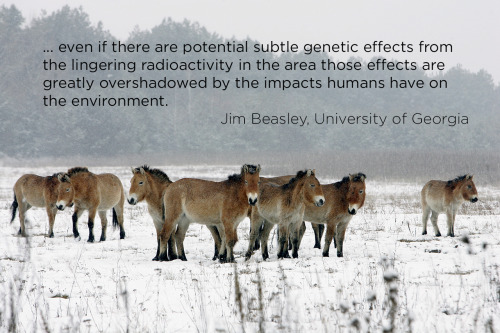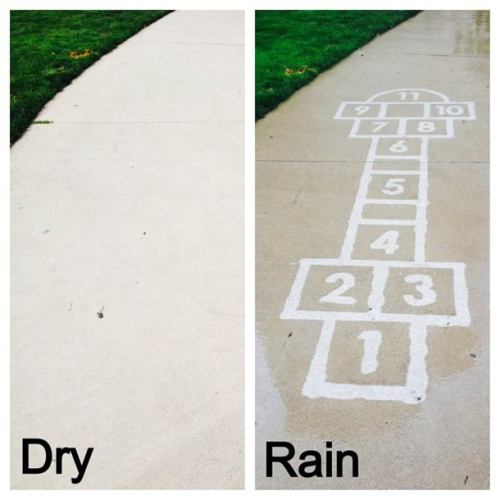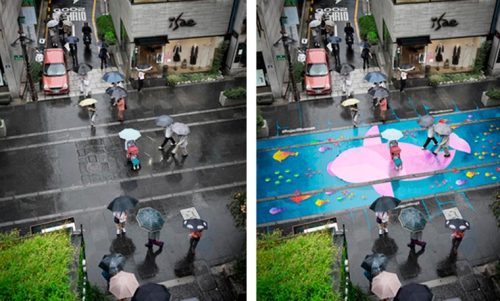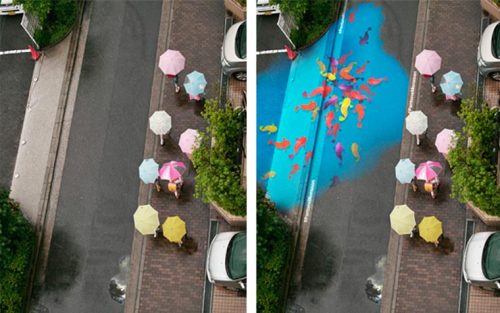The Study Authors Have Calculated The Cost Of The “lost Ecosystem Services Value” Our Planet Has
The study authors have calculated the cost of the “lost ecosystem services value” our planet has suffered in the last decade and a half. According to their calculations, the loss due to land degradation averages US $43,400 to $72,000 per square km, some US $870 to $1,450 per person, globally each year. The percentage of the world’s land affected by land degradation has grown a lot in the last decades – it has doubled between the late 1970s and the early 2000s. And the process is far from its end.
“This study by ELD shows the immediate and global impact of land degradation and highlights that actions to tackle it pay off,” Karmenu Vella, European Commissioner for Environment, Fisheries and Maritime Affairs commented on the paper.
“Increased land degradation is also one of the factors that can lead to migration and it is being exacerbated by climate change. On our planet, the area affected by drought has doubled in 40 years. One third of Africa is threatened by desertification. As President Juncker said in his State of the Union speech last week, climate refugees will become a new challenge – if we do not act swiftly.”
More Posts from Dotmpotter and Others

The UK’s first new nuclear power station for a generation will cost electricity customers at least £4.4bn and the subsidy bill could reach £20bn, the government has revealed.
The charges, which will be passed on to nearly 30 million customers, are a result of ministers’ decision to guarantee the new Hinkley Point C operators £92.50 for every unit of electricity – more than double the current market price.
It comes less than a week after the government admitted the £24bn plant in Somerset will be subsidised – something it denied throughout the last parliament.
Details of the costs – an average of about £150 to £660 per customer over the 35 years of the deal – are exposed in a document quietly put before parliament last week and which has only just come to light.
(via Hinkley Point C will cost customers at least £4.4bn | Environment | The Guardian)
When’s the last time you thought about the revolving door? This modest invention—something you likely encounter with a sense of dread while rushing off to the office or airport—is something of a modern miracle. Every time a revolving door rotates, it generates enough electricity to power a 60-watt light bulb for 23 minutes, equalizes indoor temperatures, and reduces carbon output—ultimately slowing climate change.
Revolving Doors Are an Energy Powerhouse. Why Don’t We Use Them? | GOOD







On April 26, 1986, a power surge caused an explosion at the Chernobyl Nuclear Power Plant near Pripyat, Ukraine. A large quantity of radioactive material was released.
On May 2, 1986, the Soviet government established a “Zone of Alienation” or “Exclusion Zone” around Chernobyl – a thousand square miles of “radioactive wasteland.” All humans were evacuated. The town of Pripyat was completely abandoned.
But the animals didn’t leave. And a new study, published this month in Current Biology, suggests they are doing fine. “None of our three hypotheses postulating radiation damage to large mammal populations at Chernobyl were supported by the empirical evidence,” says Jim Beasley, one of the researchers.
In fact, some of the populations have grown. These photos (mostly taken by Valeriy Yurko) come from the Belarusian side of the Exclusion Zone, and area called the Polessye State Radioecological Reserve. Kingfisher, elk, boar, baby spotted eagles, wild ponies, moose, rabbits, and wolves all make their home in the park. In some ways, human presence is worse for wildlife than a nuclear disaster.
Image credits:
1986 Chernobyl - ZUFAROV/AFP/Getty Images
Wildlife photos - Valeriy Yurko/Polessye State Radioecological Reserve
Ponies in winter - SERGEI SUPINSKY/AFP/Getty Images










Project Monsoon Clever colorful street art that only appears when it rains
After the Superhydrophobic Street Art, which uses a superhydrophobic coating to create designs which appear only in the rain, here is the Project Monsoon, which uses the same concept, this time with hydrochromic painting, which reveals its color only when wet. This amazing and clever project was designed by a Korean team of designers, in collaboration with Pantone, to provide color to the streets of Seoul during the rainy season, while paying tribute to the Korean culture. A brilliant idea! Source: ufunk

Meet the 13-year-old who just built a cheap Braille printer out of Legos
Whatever you were doing in eighth grade, it probably wasn’t as awesome as what Shubham Banerjee has been up to.
The California 13-year-old wanted to know how blind people read, so he searched online and was shocked to find Braille printers cost up to $2,000.
“I know that there is a simpler way to do this.”
What I didn’t know at the time was that this is what time is like for most women: fragmented, interrupted by child care and housework. Whatever leisure time they have is often devoted to what others want to do – particularly the kids – and making sure everyone else is happy doing it. Often women are so preoccupied by all the other stuff that needs doing – worrying about the carpool, whether there’s anything in the fridge to cook for dinner – that the time itself is what sociologists call “contaminated.” I came to learn that women have never had a history or culture of leisure. (Unless you were a nun, one researcher later told me.) That from the dawn of humanity, high status men, removed from the drudge work of life, have enjoyed long, uninterrupted hours of leisure. And in that time, they created art, philosophy, literature, they made scientific discoveries and sank into what psychologists call the peak human experience of flow. Women aren’t expected to flow.
Brigid Schulte: Why time is a feminist issue
Well! This is interesting.
(via jillianpms)
Oh my god this is exactly what I try to explain to my husband and he never gets it.
(via magesmagesmages)
And even if you have a good partner who is supportive, it doesn’t help as much as you might think. This sort of thing is baked into the cultural expectations of being female.
(via gothiccharmschool)

Could Europe Be Powered by African Solar Energy?
For a long time, people looking for big fixes to climate change have been talking about building huge solar installations in North Africa, which gets a lot more sun than most of the places where solar power is big — Germany, for example. But now, it looks as if someone finally is doing it.
Next month in Ouarzazate, Morocco, the first portion of what eventually will be the world’s biggest concentrated solar power plant – called Noor I – is set to go online, according to the Guardian, a British newspaper.
Eventually, when the entire $10 billion complex, which is being financed with assistance from the World Bank and European Union, is completed in 2020, it will generate 580 megawatts of electricity, enough to provide a big portion of Morocco’s energy needs while still leaving plenty of juice for export. The complex could prevent 700,000 tons of carbon dioxide from being spewed into the atmosphere each year.
The plant uses an ingenious technology for getting the most out of sunlight. A huge array of 500,000 crescent-shaped mirrors focus sunlight and transmit it to a single point on a tower. (The mirrors actually have tiny computers in them, which adjust the angle throughout the day to gather the most energy.)
The plant could turn Morocco, which depends upon fossil fuel imports to fill 94 percent of its energy needs, into a major producer of electricity for export. Find out how by clicking here.

An estimated 30 trillion cells in your body—less than a third—are human. The other 70-90% are bacterial and fungal!
Learn more in the new exhibition, The Secret World Inside You, now open!
Image: Gaby D'Allesandro / © AMNH
Robot Taxi: autonomous mobility for senior citizens in rural areas
Autonomous mobility. A future market, everyone is targeting: Google, Uber, Tesla, Apple, Baidu and a bunch of old-econmoy automotive players. Everybody wishes to triumph with its technology. But have you heard of :DeNA?
The Japanese tech company (originally a mobile gaming company with a net worth of over $1 billion) wants to develop the best smartphone-driven orchestration software for a fleet of robocars. :DeNA just started a new company called “Robot Taxi”, with - not surprisingly - a lucrative future robo-taxi market in mind. The nice thing is, however, that they initially don’t aim for the young urban metropolitan-elite, but rather focus on rural areas and senior citizens. Gizmodo has the story:
Today, it was announced that road tests will begin next year in Kanagawa prefecture, south of Tokyo. Fifty people will travel in trips of two miles from their homes to grocery stores, with a Robot Taxi employee on board as a safety precaution, the Wall Street Journal reports. And the demographics the company is targeting? Senior citizens, and people with no access to public transportation.
Certainly, Japan has a demographic problem and the societal views on robots differ immensely to the rest of the world. But it’s refreshing to see, that (profit oriented) companies exist, which are working on future services with people in mind.
[Robot Taxi] [via gizmodo] [read more about DeNA]
-
 shwaservices liked this · 8 years ago
shwaservices liked this · 8 years ago -
 scottcunningham-blog liked this · 8 years ago
scottcunningham-blog liked this · 8 years ago -
 guidancegreen reblogged this · 9 years ago
guidancegreen reblogged this · 9 years ago -
 ladyifrit reblogged this · 9 years ago
ladyifrit reblogged this · 9 years ago -
 dreizernet-blog-blog-blog liked this · 9 years ago
dreizernet-blog-blog-blog liked this · 9 years ago -
 dotmpotter reblogged this · 9 years ago
dotmpotter reblogged this · 9 years ago -
 bloatedhamster liked this · 9 years ago
bloatedhamster liked this · 9 years ago -
 phobphil reblogged this · 9 years ago
phobphil reblogged this · 9 years ago -
 ghettopia liked this · 9 years ago
ghettopia liked this · 9 years ago -
 blazintommyd liked this · 9 years ago
blazintommyd liked this · 9 years ago -
 moonstruck-stormy liked this · 9 years ago
moonstruck-stormy liked this · 9 years ago -
 bridgie reblogged this · 9 years ago
bridgie reblogged this · 9 years ago -
 rabbitcrypt liked this · 9 years ago
rabbitcrypt liked this · 9 years ago -
 rageqint liked this · 9 years ago
rageqint liked this · 9 years ago -
 cordgrass reblogged this · 9 years ago
cordgrass reblogged this · 9 years ago -
 cordgrass liked this · 9 years ago
cordgrass liked this · 9 years ago -
 pansytwist liked this · 9 years ago
pansytwist liked this · 9 years ago -
 kerokura-blog liked this · 9 years ago
kerokura-blog liked this · 9 years ago -
 adventiere liked this · 9 years ago
adventiere liked this · 9 years ago -
 kerokura-blog reblogged this · 9 years ago
kerokura-blog reblogged this · 9 years ago -
 vmartineautwo reblogged this · 9 years ago
vmartineautwo reblogged this · 9 years ago -
 ladyifrit liked this · 9 years ago
ladyifrit liked this · 9 years ago -
 bandit1a reblogged this · 9 years ago
bandit1a reblogged this · 9 years ago -
 bandit1a liked this · 9 years ago
bandit1a liked this · 9 years ago -
 zzkt reblogged this · 9 years ago
zzkt reblogged this · 9 years ago -
 zzkt liked this · 9 years ago
zzkt liked this · 9 years ago -
 shwaqy liked this · 9 years ago
shwaqy liked this · 9 years ago -
 buiosullelabbra liked this · 9 years ago
buiosullelabbra liked this · 9 years ago -
 3nding reblogged this · 9 years ago
3nding reblogged this · 9 years ago -
 5inthemourning liked this · 9 years ago
5inthemourning liked this · 9 years ago -
 hierontasauvakavely liked this · 9 years ago
hierontasauvakavely liked this · 9 years ago -
 flavoursofwords reblogged this · 9 years ago
flavoursofwords reblogged this · 9 years ago -
 merakimind-blog liked this · 9 years ago
merakimind-blog liked this · 9 years ago -
 ultraviolet-divergence liked this · 9 years ago
ultraviolet-divergence liked this · 9 years ago -
 a-temporary-madness liked this · 9 years ago
a-temporary-madness liked this · 9 years ago -
 iamkurtis reblogged this · 9 years ago
iamkurtis reblogged this · 9 years ago -
 iamkurtis liked this · 9 years ago
iamkurtis liked this · 9 years ago -
 ctother liked this · 9 years ago
ctother liked this · 9 years ago -
 snowcoast reblogged this · 9 years ago
snowcoast reblogged this · 9 years ago
